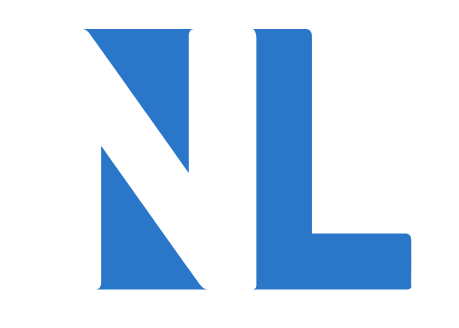Identifying Financial Emergencies: When to Consider a Quick Loan
When faced with unexpected financial challenges, quick loans can provide a timely solution to bridge the gap. These types of loans are designed to offer swift access to funds in emergencies, such as urgent medical expenses or unexpected home repairs. However, it is crucial for individuals to carefully evaluate their financial situation before opting for a quick loan, as high-interest rates can quickly accumulate if not managed effectively.
In times of financial strain, it is essential to assess the urgency and necessity of the expenses at hand. Quick loans can be a viable option for addressing immediate financial needs, but borrowers should also consider the potential long-term implications of taking on a high-interest loan. Effective management of these loans involves creating a repayment plan that aligns with one’s financial capabilities and prioritizing debt repayment to avoid falling into a cycle of escalating debt.
How Quick Loans Work in the Nordic Region
In the Nordic region, quick loans serve as a crucial component of emergency financial planning. These short-term loans provide individuals in Nordic countries with expedited access to funds in times of unforeseen financial crises. Offering a swift solution to immediate monetary needs, quick loans are designed to bridge gaps in cash flow, helping individuals manage unexpected expenses without long waiting periods or extensive paperwork.
By understanding how quick loans operate in the Nordic region, individuals can make informed decisions regarding their financial well-being during challenging times. As an integral part of emergency financial planning, quick loans offer a viable option for those seeking quick and efficient solutions to address urgent financial needs. When utilized responsibly and in alignment with a well-thought-out repayment strategy, short-term loans in Nordic countries can serve as a valuable resource in times of financial uncertainty.
Evaluating the Pros and Cons of Quick Loans
Quick loans can be a convenient option for those facing unexpected financial emergencies. Unlike traditional loans that can take weeks to process, quick loans offer a speedy application process, making them ideal for urgent situations. However, it is crucial for borrowers to exercise caution and fully understand the terms and conditions before committing to a quick loan. Quick loan application tips can help individuals navigate the process more efficiently and ensure they are making informed decisions about their financial situation.
When comparing payday loans versus quick loans, one key difference to consider is the repayment period. Payday loans typically require full repayment by the borrower’s next payday, while quick loans may offer more flexible repayment terms. This can be advantageous for borrowers who need a bit more time to repay the loan without facing excessive fees or penalties. Understanding the nuances between these different types of loans can help borrowers make a more informed decision based on their individual financial needs.
Steps to Apply for a Quick Loan Safely
In times of financial hardship or unexpected expenses, emergency loans can provide a much-needed lifeline. However, it is crucial to approach the application process with caution and a clear understanding of the terms and conditions involved. For individuals facing urgent debt management issues, quick loans in the form of short-term Nordic financial aid options can offer a temporary solution to alleviate financial strain.
Before applying for a quick loan, it is essential to assess your current financial situation thoroughly. Take the time to evaluate your income, expenses, and repayment capability to ensure that taking on additional debt is a sustainable choice. Research different lenders offering emergency loans and compare their interest rates, fees, and repayment terms to find the most suitable option for your needs. By approaching the application process with careful consideration and a focus on responsible borrowing, you can navigate the world of quick loans safely and effectively.
Managing High-Interest Rates: Strategies for Borrowers
High-risk borrowing strategies in the realm of fast cash loans in Scandinavia often come with the allure of quick and easy money. However, borrowers must exercise caution when considering these options, as the high-interest rates can quickly turn a seemingly small loan into a significant financial burden. It is essential for borrowers to assess their financial situation thoroughly before resorting to such loans, as failing to repay on time can lead to a cycle of debt that is challenging to break free from.
When faced with the prospect of taking out a fast cash loan in the Nordic region, borrowers should explore alternative sources of funding with lower interest rates. Prioritizing financial discipline and seeking advice from reputable financial advisors can help individuals navigate through challenging times without resorting to high-risk borrowing strategies. By establishing a sound financial plan and adhering to a strict budget, borrowers can mitigate the risks associated with high-interest loans and maintain their financial stability in the long run.
Alternatives to Quick Loans: Other Emergency Funding Options
When faced with a financial emergency, quick loans may seem like the go-to solution for immediate cash needs. However, before pursuing this option, it’s essential to explore alternative emergency funding options that may offer more favorable terms and conditions. One such alternative could be seeking financial assistance from family or friends. While it may feel uncomfortable to ask for help, loved ones may be willing to provide a loan without high-interest rates and strict repayment terms, offering a more flexible and affordable option.
Another alternative to quick loans is exploring community resources and nonprofit organizations that provide financial support to individuals in need. These resources often offer low or no-interest loans, financial counseling, or emergency assistance programs designed to help individuals navigate difficult financial situations. By tapping into these community resources, individuals can access the support they need without falling into the cycle of high-interest debt that quick loans may potentially lead to.
• Seeking financial assistance from family or friends
• Exploring community resources and nonprofit organizations
• Low or no-interest loans, financial counseling, or emergency assistance programs available
By considering these alternative options to quick loans, individuals can make informed decisions that align with their long-term financial goals and avoid the potential pitfalls of high-interest debt. It’s important to research and explore all available resources before committing to a loan option to ensure that it is the most suitable choice for one’s unique financial situation. Remember, there are always alternatives out there – it just takes some time and effort to find the right solution for your needs.
Avoiding the Debt Trap: Responsible Borrowing Tips
When considering borrowing money through quick loans, it is essential to understand the terms and conditions associated with these financial products. It is crucial to assess your current financial situation and only borrow an amount that you can comfortably repay within the agreed timeframe. Responsible borrowing entails thorough research and comparison of different lenders to ensure you are getting the best deal possible in terms of interest rates and fees.
Furthermore, it is advisable to create a realistic budget to determine the exact amount you need to borrow rather than opting for additional funds that may lead to unnecessary debt. Prioritize essential expenses and cut down on discretionary spending to avoid falling into a cycle of borrowing that could result in financial distress. By practicing responsible borrowing habits and staying within your means, you can effectively prevent the debt trap and maintain a healthy financial outlook.



